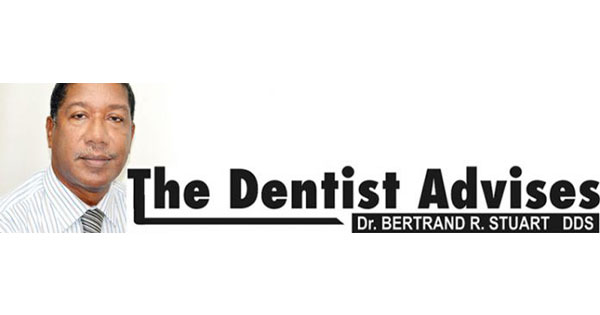
WHEN a prominent doctor and I were discussing the recent surge in the number of coronavirus infections in Guyana, he pointed out that the masses would have to be constantly told what we receive professionally before receiving and complying. Because oral health is no different, it seems to me that it is logical to advise regular readers of this column to make a fresh decision about their dental health, and can easily do this after assimilating the basics on oral hygiene.
Many of the foods you eat cause the bacteria in your mouth to produce acids. Sugary foods, such as candy and cookies, are not the only culprits. Starch, such as bread, crackers and cereals, also causes acids to form. If you snack often, you may be having acid attacks, your teeth may rot. These are all covered by the sticky film that the teeth and gums harbor, called a plaque.
Plaque also produces substances that irritate the gums, making them red, tender or easily bleeding (gingivitis). After a while, gums can pull away from the teeth. Pockets form and fill with more bacteria and pores. If the gums are left untreated, the bone around the teeth (periodontitis) can be destroyed. The teeth may become loose or have to be extracted. In fact, this gum disease is the leading cause of tooth loss in adults.
One way to prevent tooth decay and gum disease is by eating a balanced diet and limiting the number of snacks between meals. If you need a snack, choose nutritious foods such as raw vegetables, plain yoghurt, cheese or a piece of fruit.
The best way to remove plaque that causes decay is by brushing and cleaning your teeth daily. Brushing removes plaque from the surfaces of the teeth. Brush your teeth with a soft brush. The size and shape of your brush should fit your mouth, allowing you to reach all areas easily. Use a fluoride-containing toothpaste, which helps protect your teeth from decay. It doesn’t matter how many times a day you brush. What is important is thoroughness. You should spend the same amount of time in minutes every day (24 hours), brushing and flossing, as the number of natural teeth you have in your mouth.
Cleaning between the teeth once a day with floss or interdental cleaners removes plaque between the teeth, areas where the toothbrush cannot all. It is essential to prevent gum disease. By looking after your teeth, eating a balanced diet and visiting your dentist regularly, you can have healthy teeth and an attractive smile your whole life. Follow these tips to keep your teeth and mouth clean.
How do you brush your teeth correctly?
1. Place your toothbrush at a 45 degree angle against the gum.
2. Gently move the brush back and forth in short (wide tooth) strokes.
3. Brush outer teeth, inner surfaces of teeth, and teeth chewing surfaces.
4. Use the brush’s “toes” to clean the inner surfaces of the front teeth, using gentle up and down strokes.
5. Brush your tongue to remove bacteria and freshen your breath.
How do you floss your teeth correctly?
1. Cut off about 18 inches of floss and wind most of it around one of your middle fingers. Wind the remaining floss around the one finger from the other hand. The finger will take the floss as it gets dirty. Hold the floss tightly between your thumbs and fingertips.
2. Guide the floss between your teeth using a gentle rubbing motion. Never snap the floss to the gum.
3. When the floss reaches the gum line, curve it to a C shape against one tooth. Slide gently into the space between the gum and the tooth.
4. Hold the floss tightly against the tooth. Rub the side of the tooth gently, moving the floss away from the gum with motions up and down.
5. Repeat this method on the rest of your teeth.
6. Don’t forget the back of your last tooth.